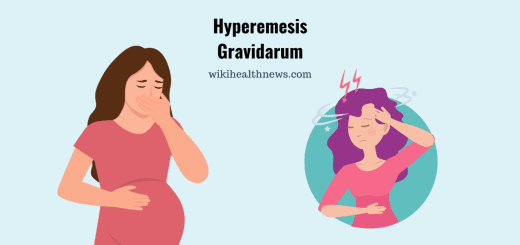Aquatic Therapy Under Medical Guidance

What is aquatic therapy?
Aquatic therapy is a physical therapy that takes place in a pool or other aquatic environment with the supervision of a trained healthcare professionals in the field. This therapy is also known as water therapy, aquatic rehabilitation, aqua therapy, pool therapy, therapeutic aquatic exercise, balneotherapy or hydrotherapy.
Hydrotherapy is a basic method of treatment prominently used in the system of natural medicine, which is also called as water therapy, aquatic therapy, pool therapy, and balneotherapy.
Usage of water in various forms and in various temperatures can produce different effects on various system of the body. Many studies and reviews reported that the effects of hydrotherapy only on very few systems and there is lack of studies/reviews in reporting the evidence-based effects of hydrotherapy on various systems of body.
Goals of aqua therapy programs include:
- Improving flexibility: It improves the movement of body giving a flexible functioning of the skeletal system.
- Improving balance and coordination: Improves the coordination of the extremities.
- Building muscle strength and endurance: Improvise the muscle strength coordinating the muscular system
- Enhancing aerobic capacity
- Assisting with gait and locomotion
- Reducing stress and promoting relaxation: Relaxes the mind and promoting a calm and peaceful environment.
Aquatic therapy is varied from aquatic exercise or aquatic fitness because it is a form of physical medicine and rehabilitation specialty that requires the involvement of a trained professionals and it involves many insurance providers due to the personalized nature of the treatment. However aquatic exercise does not need to be supervised by a trained professional. It is also not covered by insurance, and it often takes place in a group setting that includes multiple people with different levels of physical fitness.
Adaptive aquatics is a separate entity often confused with aqua therapy. Adaptive aquatics is defined as the process of teaching people with disabilities how to swim safely in the water. Hence aquatic therapy does not focus on teaching the clients how to swim.
Water therapy services are generally offered in hospitals, sports medical clinics, traditional outpatient and rehabilitation centers. Senior living centers also works on providing aquatic therapy services as a way to encourage their residents to maintain fitness level.
| Different types of therapy | Effects | Beneficial for |
| Superficial cold application | Decrease in local metabolic function, local edema, nerve conduction velocity (NCV), muscle spasm, and increase in local anesthetic effects | After injury or swelling |
| Immersion at 32°C | Lowers the heart rate, systolic blood pressure (SBP)and diastolic blood pressure (DBP), urine excretion increases | Patients with Cardiac and Renal impairment |
| Immersion at 14°C | Increase in urine output by 150% | Kidney dysfunction |
| Regular winter swimming | Decrease tension, fatigue, memory, and mood negative state | Depression |
| Warm-water bathing and low-temperature sauna bathing at 60°C for 15 min | Thermal vasodilatation improves cardiac function | In patient with chronic heart failure (CHF) |
| Aqua-jogging without caloric restrictions | Reductions in waist circumference and body fat, improvement of aerobic fitness and Quality of life | Obesity |
History of aquatic therapy
Water therapy has been used for thousands of years throughout the world. Here are the examples for aquatic therapy in history:
- Ancient Greeks and Romans took bath in hot springs to improve circulation and promote relaxation.
- The Greek physician, Hippocrates recommended bathing in spring water as a way to treat sickness.
- The Great Swiss monks were known to use thermal waters to treat sick or disabled people in their community.
- Japanese hot springs are said to have medicinal effects that include healing intense chronic pain, treating skin related problems, curing menstrual disorders of female and relieving constipation in old age.
- The German physicians were firm believers in pediatric water therapy. Water birthing was very popular throughout the areas in Germany during 1960s and 1970s.
Conditions that are benefited by water therapy:
Water therapy is helpful for clients suffering from the following conditions:
- Arthritis like osteoarthritis
- Arthroscopic surgical recovery
- Autism Spectrum disorder
- Bursitis also known as bursa inflammation
- Cerebral palsy, a developmental disorder
- Chronic pain/persistent pain
- Depression , a mood disorder
- Idiopathic joint pains
- Joint reconstruction surgical recovery
- Joint replacement surgical recovery
- Lower back ache
- Osteoarthritis(OA)
- Orthopedic disorders
- Parkinson’s disease, a progressive disorder
- Multiple sclerosis(MS)
- Rheumatoid arthritis(RA)
- Scoliosis
- Stress, a mood disorder
- Spinal cord injuries
- Sprains and strains of joints
- Stroke(cerebrovascular accident)
- Tendonitis/Tendinitis

People of all age group can enjoy water therapy benefits.
These are some of the ways by which water’s natural properties create an ideal therapeutic environment:
- Warm water provides a relaxing, soothing and refreshing environment for aching joints and muscles.
- Water’s natural viscosity or resistance is used for muscle strengthening and increasing rehabilitation progressions.
- Buoyancy allows for flotation and reduces the effect of gravity on injured or aching joints and muscles.
- Hydrostatic pressure helps to support and stabilizes the client, allowing people with balance deficits to perform exercises without a fear of falling, decreases pain and improves cardiovascular return.
- Turbulence and wave propagation let the therapist to gently manipulate the client through the desired exercises.
- The respiratory muscles are forced to work harder in the water, providing a natural strength that benefits the client long after the therapy session has ended.
Conditions where aquatic therapy should not be applied:
- High fever patients
- Open wounds (unless covered with bio-occlusive dressing), septic wounds.
- Incontinence of urine
- Uncontrolled seizure disorder
- COPD
- Currently taking medication that would alter cognition
- Client being pregnant and experiencing complications
- Chlorine or bromine allergic patients
- Serious fear for water
- Clients with Hepatitis A infection.











